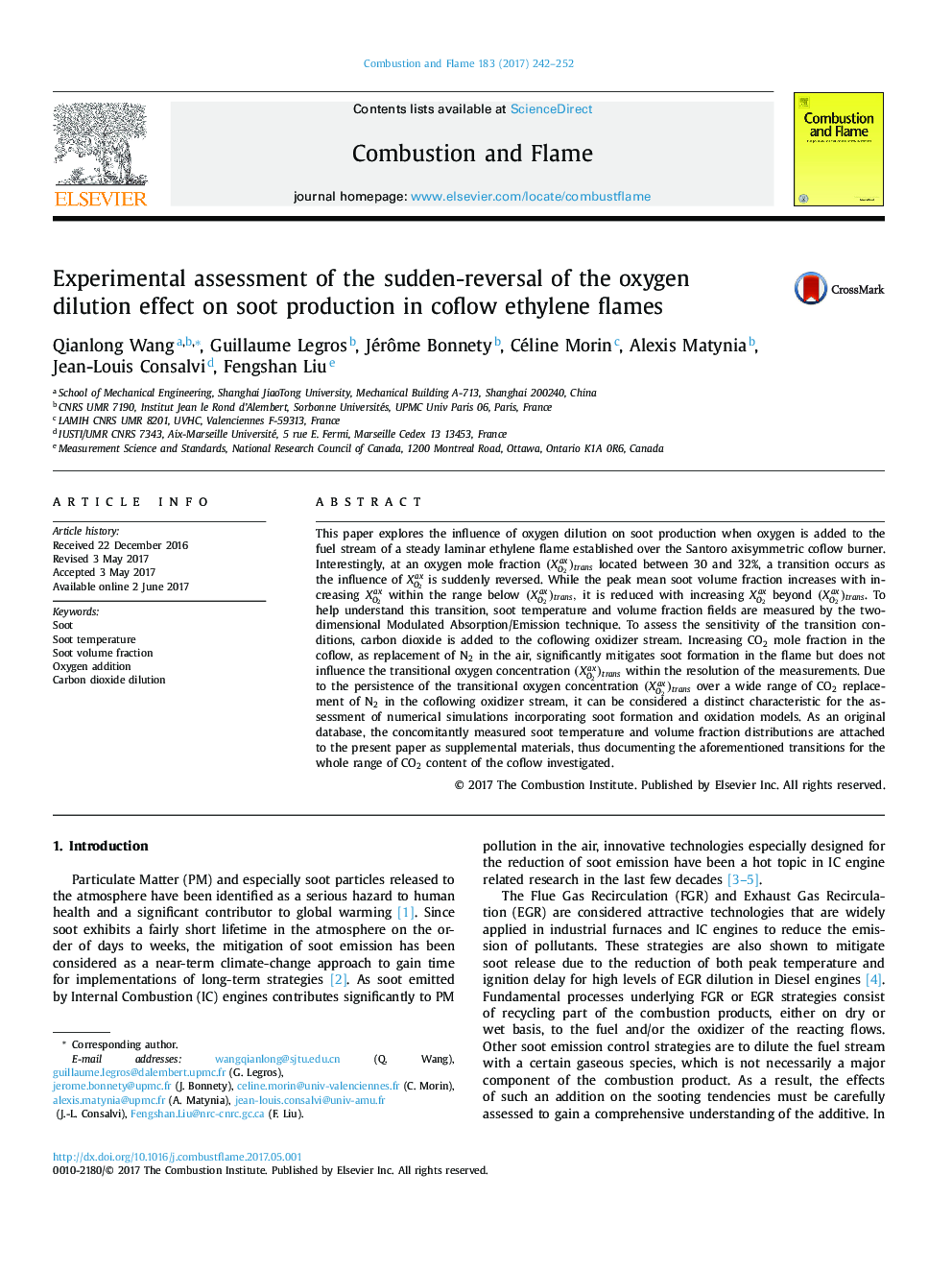| Article ID | Journal | Published Year | Pages | File Type |
|---|---|---|---|---|
| 6468146 | Combustion and Flame | 2017 | 11 Pages |
This paper explores the influence of oxygen dilution on soot production when oxygen is added to the fuel stream of a steady laminar ethylene flame established over the Santoro axisymmetric coflow burner. Interestingly, at an oxygen mole fraction (XO2ax)trans located between 30 and 32%, a transition occurs as the influence of XO2ax is suddenly reversed. While the peak mean soot volume fraction increases with increasing XO2ax within the range below (XO2ax)trans, it is reduced with increasing XO2ax beyond (XO2ax)trans. To help understand this transition, soot temperature and volume fraction fields are measured by the two-dimensional Modulated Absorption/Emission technique. To assess the sensitivity of the transition conditions, carbon dioxide is added to the coflowing oxidizer stream. Increasing CO2 mole fraction in the coflow, as replacement of N2 in the air, significantly mitigates soot formation in the flame but does not influence the transitional oxygen concentration (XO2ax)trans within the resolution of the measurements. Due to the persistence of the transitional oxygen concentration (XO2ax)trans over a wide range of CO2 replacement of N2 in the coflowing oxidizer stream, it can be considered a distinct characteristic for the assessment of numerical simulations incorporating soot formation and oxidation models. As an original database, the concomitantly measured soot temperature and volume fraction distributions are attached to the present paper as supplemental materials, thus documenting the aforementioned transitions for the whole range of CO2 content of the coflow investigated.
